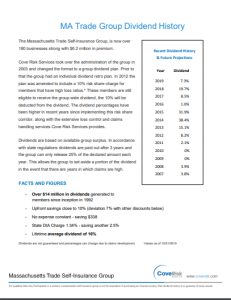This is just a small taste of what we could provide for you company. Check out the table of contents of all the pages that are provided for you free of charge…
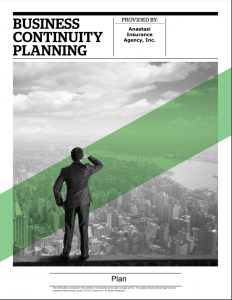
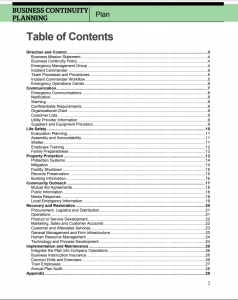
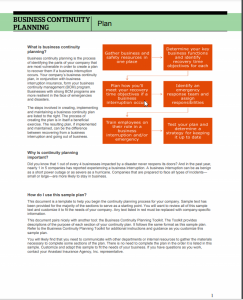
This is just a small taste of what we could provide for you company. Check out the table of contents of all the pages that are provided for you free of charge…




Condo (HO6) insurance, or condominium coverage, is a type of insurance policy that protects you, your stuff, and your unit.
Condo insurance is a type of property and casualty insurance. It protects condo owners from bad things that may happen to them, their family, their stuff, or their investment.
If you’re asking, ‘Why do I need condo insurance in the first place?’, read on.
Your standard condo insurance policy (called an HO6 policy) provides the following 5 areas of insurance coverage:
Your condo association or trust has purchased insurance that protects the building or buildings, the liability of the entity that owns the building or buildings, and the liability of the entity’s officers and directors. This policy is a commercial policy commonly referred to as a Master Policy and its coverage is built around the language that is found in the condo association By-Laws or Declarations. These documents will detail and define the responsibilities of the Association as it pertains to their insurable interest.
Master Policies can vary depending on the above-mentioned by-laws or declarations. However, the following items are certain not to be covered.
Your unit owner policy cost can start for as little as $200 per year. However, your personalized price depends in a variety of factors. They include:
Talk to your independent insurance agent about what coverage is right for you. Nothing is more expensive than an uncovered loss.
What other things do I need to worry about?
Since the Master Policy can vary depending on the by-laws or declarations it is important to review these documents and determine what additional coverages you will need to protect yourself. You can request these documents along with the master policy from your condo association and review them with your attorney and independent insurance agent to determine what is best for you. You may find you need additional coverage for some of the following areas.
Talk to your independent insurance agent about finding coverage that’s right for your specific situation.
I don’t have an independent insurance agent…
That’s ok, you can call Anastasi Insurance Agency at (508)248-1440 and talk with one of our personal lines experts that will find you the best coverage at the lowest cost.
Presented By
Anastasi Insurance Agency
4 Brookfield Rd
PO BOX 1261
Charlton City, Ma 01508
Tel: (508) 248 1440
Fax: (508) 248 1447
www.anastasiinsurance.com

Commercial fleets need to maintain a workforce of loyal, qualified drivers in order to succeed. But recently, increased demand for freight volume has highlighted an ongoing driver shortage that’s left many motor carriers operating under capacity.
In order to ensure that your business is attracting and retaining talented drivers, you need to evaluate how the shortage may be affecting you and the steps you can take to make your workplace appealing.
The first step when attracting or retaining drivers should be to understand the underlying causes of the driver shortage:
Before you consider changing your pay models or workplace benefits, there may be some operational changes you can review to attract or retain drivers:
One of the most effective ways to appeal to drivers is to increase wages. Although this can be done by simply giving drivers a set raise or bonus, there are alternative payment models and other considerations to keep in mind:
When considering raises, bonuses or other pay models, keep in mind that your drivers’ wages could impact your liability or workers’ compensation rates. Contact us at 508-248-1440 for more help addressing your specific concerns.
Another way to make your business appealing to talented drivers is to offer a competitive benefits package and create a positive work environment. Besides 401(k) investment matching and comprehensive medical coverage, you should consider the following:
Additionally, an emphasis on respect can help your business attract and retain drivers. Experts believe that drivers may be turned away from the transportation industry due to a perceived lack of respect for the long hours they put into their jobs. Make sure to show drivers they’re respected by paying attention to their feedback, recognizing their accomplishments and staying involved in their personal and professional lives.
The driver shortage isn’t going away anytime soon, and you need to constantly review your operations to ensure you’re attracting and retaining a talented workforce. Get in touch with Anastasi Insurance Agency, Inc. today for more resources on driver training, legal requirements and transportation-specific news.
Are you aware of the financial benefits of an effective return to work program?
WHAT DOCUMENTATION IS NEEDED FOR A SUCCESSFUL RETURN TO WORK PROGRAM?
HOW DO YOU COMMUNICATE YOUR RETURN TO WORK PROGRAM TO EMPLOYEES?
At Anastasi Insurance Agency, we can provide you with a comprehensive policy plus supplemental documents at no additional charges…
Here are just some of what we can provide:
EMPLOYER RESOURCES
Return to Work Policy
Return to Work Program Guide
Impact of Return to Work Programs Presentation
Report of Injury or Illness Form
Job Analysis and Physician Report of Work Capacity Form
Claim Topics: Return to Work Wages
Alternate Ideas for Return to Work Duties: General Industry
Return to Work Evaluation Form and Letter
EMPLOYEE RESOURCES
Employee Duties Regarding Occupational Injuries/Illnesses
Playing it Safe: Return to Work Program
Safety Spotlight Newsletter
You always put YOUR BUSINESS FIRST…
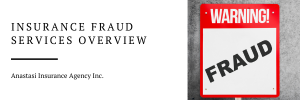
From an insurance buyer’s perspective, it can sometimes feel as if premium prices change on a whim. But the truth is that the insurance market is cyclical in nature, fluctuating between soft and hard markets:
While many insurance buyers have enjoyed a soft market for years, the market is hardening. As a result, business leaders now face tough choices regarding their insurance, making it all the more important for them to understand what to expect in a hardening market and how to respond effectively.
Factors Contributing to a Hardening Market
In what was one of the longest soft markets in recent years, businesses across several lines of insurance enjoyed stable premiums and expanded coverage for decades. However, after years of gradual changes, the market is firming, leading to increased premiums and reduced capacity.
A number of different factors affect insurance pricing, but the following are common contributors to the hardening market:
What to Expect During a Hard Market and How to Respond
Even the most prepared organizations will have to adapt to the hard market, and businesses can expect to face:
Put simply, during a hard market, insurance buyers may face difficult decisions regarding their insurance coverage. Thankfully, however, businesses are not without recourse in the face of a hard market. The following are some strategies to consider to help navigate shifts in the market:
Business owners who proactively address risk, control losses and manage exposures will be better prepared for a hardening market than those who do not. Work with your broker now to prepare your business for changes down the road. Contact Anastasi Insurance Agency, Inc. today to get started.

For the unprepared, workers’ compensation (WC) issues can be both confusing and costly. Fortunately for employers, there are ways to actively engage WC issues to influence their outcomes.
Through management controls and active involvement in the WC process, your organization can effectively influence related costs. To do so you will have to establish a number of your own processes that guide decision making throughout your organization.
Areas requiring WC management can be divided into three main categories. These categories include facets that may range from the simple to the complex, but as a whole, address vital issues that can negatively influence WC costs in your company.
Workplace Safety Means Fewer Claims
Simply put, reducing claims reduces costs. Establishing a safety-minded culture throughout every level of your company is essential to keeping workers injury free. However, establishing such a culture isn’t an overnight solution. To be successful, an ongoing commitment to safety must be made. Such a commitment must be supported by management and given the necessary resources to succeed.
Developing comprehensive safety policies for employees builds a firm foundation for your safety culture to grow. Such policies also encourage OSHA compliance, further improving your safety efforts while helping you avoid costly fines.
Mitigate Loss After an Injury
Unfortunately, even with all the right programs in place, it is still possible for accidents to happen. When a workplace incident occurs how you respond can greatly influence the outcome of the claim. Prompt claim reporting is essential to keeping costs down. It is also important to have a designated injury management coordinator, someone who can supervise open claims and work with both employees and medical personnel to facilitate the timely recovery.
The longer an employee is out of work the more expensive their claim will be. Return-to-work programs that allow injured employees to come back to work at a limited capacity during the recovery process, are one of the most effective tools business owners have to reduce the severity of a claim.
Managing Your Mod
Insurers use what is known as an experience modification factor, or mod, to calculate the premiums you pay for workers’ compensation coverage. By managing your exposures and promoting safety it is possible to manage your mod and decrease your premium rates.
Like a good safety program, controlling your mod is an ongoing process. To reap the benefits of lower premiums you will have to keep in regular contact with your insurance provider to ensure they have the most accurate data to use in their calculations.
Contact us today to see how we can help you and your business.
Your Business First….
Return to Work – Health and Happiness
Return to Work programs help you get injured employees back to their normal or  modified job duties as quickly and safely as possible.
modified job duties as quickly and safely as possible.
Instead of paying for workers’ compensation costs and lost work days, you’ll save money by paying your employees their normal wages for doing light-duty work that the company needs done anyway. You’ll also be able to keep them on their regular work schedules, which is proven to increase their likelihood of returning to regular working duties sooner.
Benefits for Your Company
Return to work programs reduce employees’ days away from work, allow employees to recover more quickly and foster a more positive work environment.
Implementing a return to work program can benefit your company financially by:
Your company can benefit from a return to work program in other ways, including:
Benefits for Your Employees
Return to work programs don’t just benefit your company—they benefit your employees, too. Implementing a return to work program for injured employees communicates care and concern, and shows your employees that you value their well-being and want them back on the job as soon as possible.
Your employees also benefit from a return to work program in the following ways:
Get Your Program Going
Many companies fail to implement return to work programs because they don’t have the resources or expertise to get started. Return to work programs must be organized and implemented efficiently, and Anastasi Insurance Agency, Inc. can help you do just that by providing you with the resources you need to make your program a success, including educational articles, forms and policies.
Our staff of loss control professionals can conduct a thorough evaluation of your company’s return to work program needs and determine the best plan for your organization.
| Anastasi Insurance Agency, Inc.
4 Brookfield Road Charlton, MA 01507 P | 508-248-1440 |

Your homeowners insurance policy can offer financial protection in the event of an unexpected disaster involving your home or personal property. But how you will be reimbursed following a claim depends on the type of coverage you have. There are two main valuation methods when it comes to homeowners insurance—replacement cost coverage and actual cash value coverage. By understanding the difference between these valuation methods, you can make informed decisions about your homeowners insurance and secure coverage that meets your needs.
Key Differences Between Replacement Cost and Actual Cash Value
Although replacement cost coverage and actual cash value coverage can both offer financial protection in the event of a claim, the amount that your policy will pay out differs between these two valuation methods. Here are the key differences:
This form of coverage can be especially beneficial in protecting against major losses, such as significant damage to the physical structure of your home or expensive items within your home. However, keep in mind that replacement cost coverage typically requires you to pay a higher premium. In addition, remember that you will only be compensated up to your policy limit amount—if you experience a covered loss that exceeds your policy limit, you may have to cover the difference. If you are concerned about the risk of a covered loss totaling more than your policy limit, be sure to consult your trusted broker to discuss additional policy options—such as guaranteed replacement cost coverage or extended replacement cost coverage—which can provide further financial protection.
Although this form of coverage typically offers reduced compensation in the event of a covered claim, you will likely save money on your policy premium. Actual cash value coverage can be more suitable for individuals that live in low-risk areas (e.g., locations where incidents such as heavy winds, fires or theft are less common) or own fewer expensive items.
Which Coverage Is Best for You?
There are pros and cons to both replacement cost coverage and actual cash value coverage. In order to select the best coverage that meets your specific homeowners insurance policy needs, follow these steps:
We’re Here to Help
There are several factors to consider when determining which type of coverage is right for you, but you don’t have to navigate this decision alone. Anastasi Insurance Agency, Inc. is here to walk you through your homeowners insurance policy and provide expert guidance regarding which coverage option is best for you, your belongings and your wallet. For further coverage guidance, contact us today.
As we climb out of the abyss of this pandemic the Trucking Industry remains strong, dedicated and reliable. Thank you for your extra efforts and Keeping America Great!!
Here is an opportunity to save on your workers comp premium. If you are a Massachusetts Trucker you already enjoy some of the lowest Work Comp Rates in the country. Well…..things just got better for Massachusetts Truckers!!
Join the hundreds of Massachusetts Truckers who have slashed their cost of insurance and enjoying much lower workers comp rates.
See below for more information on how you can save money.
Call us to see how we can help you reduce your Workers Comp – A small reward for Keeping America Great!!
